Progress Oman
Maintaining the momentum
The top companies in the oil and gas sector in Oman are unfazed by the lower oil prices and have no plans to put brakes on development projects

Oman has planned for a total capital and operating budget of $11.5 billion in 2015 for the oil and gas sector. It includes $8.7 billion for the oil sector and $2.8 billion for the gas sector. The Sultanate added 393 million barrels to the oil and condensate reserves in 2014. As a result, the country’s total reserves stand at 5,306 million barrels. In 2014, Oman’s oil and condensate production was 943,000 b/d. In 2015, Oman is targeting 980,000 bpd for oil and condensate. The total oil production in 2014 was 344.5 million barrels. The average oil price realised in 2014 was $103 a barrel. The highest price point was $108 and the lowest was $87. On the gas front, Oman added 1.9 tcf to the reserves last year, taking the total gas reserves to 24.3 tcf. The gas production in 2014 was 103 Mm3/d and overall Oman produced 1.33 tcf gas in 2014. Talking about the Omanisation in the operating companies, HE Salim bin Nasser Al-Aufi, Undersecretary, Ministry of Oil & Gas said that 1,600 new Omanis joined the work force in 2014. A total of 12,000 Omanis are working in the operating companies and the average Omanisation rate is 79 per cent.
IMPACT OF LOW OIL PRICES
According to HE Dr Mohammed bin Hamad Al Rumhy, Minister of Oil and Gas, Oman is moving ahead with the development plans despite the lower oil price environment. He informed, “We are not slowing down in any of the field developments… the only victim of the low oil price is ‘Habhab’ field which requires a complex technology. The field itself is very complex. That is the only project that we have temporarily shelved. Really, it is not because of the (low) oil price. We did some tests using some chemicals to reduce the viscosity of the accumulation and the cost of the chemical is very high and it is a very difficult chemical to handle. So everything came back to the drawing table, we reviewed and studied it again. Actually even before the collapse of the oil prices, that was almost a decision. It is just a coincident that the review of all our projects including Habhab was done after the collapse of the oil price and now we are telling everybody that this project is now officially shelved. We hope to come back again when there is a better technology, better methodology and hopefully, better price for that type of crude oil. But we have not slowed down in any project.” On the issue of reduction of the costs by the operators and the contractors, HE Dr Rumhy cited the example of how Petroleum Development Oman (PDO) is handling this as he said, “PDO had (recently) engaged almost all contractors; over 150 contractors and service providers are working with PDO; this is just an example. And the idea was both sides should sit together and find ways of optimization. The results were extremely encouraging.” Corroborating the Minister’s statement, Raoul Restucci, Managing Director of PDO, added, “Historically, every time there is a price decline the natural reaction of the industry is the operators will send a firm letter to the service entities, to the contractors and say thou shall reduce the cost by x, (say) 20 per cent, 25 per cent. Very often that is in excess of the survival margin; it just destroys the industry because players don’t survive. Few years later, when there is a recovery in the prices, you no longer have the competition or sustainability of players. These short term wins actually turn into a real pain later. We have taken a very different approach. We have engaged with the contracting community and told them that we cannot reduce cost that creates long term sustainability. We don’t want to destroy your margins but we have to become effective and cheaper… It’s all about working together.”
Under the patronage of the Ministry of Oil & Gas, the In-Country Value (ICV) strategy blueprint was released in December 2013. It envisaged $64 billion ICV opportunities over the next 8-9 years. Talking about the ICV strategy under the current lower oil price environment, HE Aufi said, “The original opportunities identified were based on initial thinking of what the potential is, $64 billion. As we started progressing through wave one and wave two, not all the opportunities materialised. Some additional opportunities were also identified. The strategy now is before we initiate a phase or a wave rather, we work out the details of the opportunities to a point where we are confident enough to give it to the market. I think we are still aiming for the $64 billion, if we can. We are still aiming for the maximisation of Omanisation. We are working very hard on establishing standards for the training programmes, certifying some of the training institutes be it private or public… $64 billion is an aspirational target, we are aiming for it. The low oil price didn’t change that direction at all. In fact, during the ICV committee meetings we didn’t discuss the oil prices. So we are pushing as hard as we can.”
PDO – LEADING THE WAY
In 2014, Petroleum Development Oman (PDO) recorded the highest oil production since 2006. Oman’s largest oil and gas operator’s average daily oil production for 2014 was 570,534 barrels per day (bpd), above the 2014 plan and well above the long-term plateau target of 550,000 bpd. The combined average PDO production (oil, gas and condensate) stood at 1.231 million barrels of oil equivalent per day (boepd) in 2014, the third highest in PDO history. The Exploration Directorate of PDO had a successful year in 2014, resulting in significant additional contingent resources to support long-term growth in oil and gas production, whilst pushing for early monetisation where possible. There was a significant 8 per cent increase in Stock Tank Oil Initially In Place (STOIIP) from 61.9 billion barrels in 2014 to some 66.6 billion in 2015. There was also a 16 per cent increase in Gas Initially In Place (GIIP) to 75.4 trillion cubic feet (Tcf). In September 2014, the directorate completed acquisition of the largest seismic survey in Oman to date – the 8,000 sq km Yibal/Al Huwaisah survey which began in April 2013. It also achieved a 10-year LTI-free record.
On the East Flank of the Rima–Marmul field, PDO aims to discover, develop and produce a multitude of smaller prospects (with an estimated ultimate recovery of 200 million barrels). PDO’s joint exploration production team can now better target prospects through enhanced resolution seismic imaging and PDO is now looking for undiscovered opportunities which are close to existing facilities and which can be monetised quickly. As a result, all four of the prospects drilled in 2014, not only discovered oil, but three are already in production. “Jointly with Production, the Exploration Directorate is accelerating oil appraisal and development of the Upper Shuaiba project in the Lekhwair area and the first oil is planned in 2017,” informed Restucci.
At Khulud – one of the deepest tight gas developments in the world – six wells of PDO have been steadily producing through the Early Production System (EPS) since January 2014. The project is currently self-funding through EPS revenues with the wells outperforming break-even levels. PDO expects the horizontal well data by last quarter of this year. “The early monetisation at Mabrouk Deep – one of PDO’s largest gas discoveries with estimated in-place volumes amounting to 2.9 trillion cubic feet of gas and 115 million barrels of condensate – also progressed with early well tie-ins establishing production in record time,” stated Restucci. On the plans for the next five years, he said that PDO was expecting an overall expenditure of over $40 billion in the period 2015-2019. In 2014, PDO’s Well Engineering Directorate drilled 497 wells – eight above plan and six per cent under budget – and managed to cut the time it takes to drill 10 metres for all wells from 2.6 to 2.5 hours. The team also drilled the fastest well in PDO history at Amal – 3.29 days. Using Lean, the directorate generated considerable savings across the full spectrum of operations, ranging from improved fracking unit deployment to rig chemical consumption. Restucci added, “A new Wells Learning Centre was opened, a joint venture between PDO and Shell and a first for Oman, marking a step-change in the level of training for well control and certification for both experienced wells professionals and newcomers.”PDO’s Central Project Delivery Department reported a number of key delivery milestones in 2014. ‘The construction phase of the Rabab Harweel Integrated Project has now begun. Additionally, independent assurance reviews have praised the quality and completeness of the packages delivered by PDO’s in-house front end engineering and design (FEED) office and PDO remains on track for a final investment decisions on another mega project at Yibal Khuff. The third mega project at Budour is being reviewed in light of additional discoveries. The Government Gas Plant at Lekhwair is now also on stream, along with the Karim West water flood project,’ as per a Company report.
PDO continued to step up its asset integrity drive, more than trebling the number of pipeline inspections across its operations. As part of its integrity enhancement programme, 670km of bare carbon steel flowlines were replaced with pipes lined with polyethylene to minimise internal corrosion and leaks. PDO also made significant progress in alarms management and secured high ratings in maintenance integrity execution following a number of external audits. In addition, key milestones were achieved in preventative and corrective maintenance compliance, safety critical equipment tracking, and high risk equipment or well failure remediation targets. Equipment performance issues in its gas plants also resulted in considerable focus addressing integrity threat assessments and mitigation thereof. To demonstrate ICV’s strategic importance to PDO’s way of working, a new ICV directorate was created in June last year by the company. Talking about the key achievements on ICV front, Restucci said, “PDO had awarded $4.9 billion to locally registered companies. More than 4,300 jobs and training opportunities were delivered for young Omanis in 2014 (more than 14,000 since 2011) and PDO is targeting the creation of more than 7,000 in 2015.”
IBP – GEARING UP
Oman has made a significant progress to produce first gas in Khazzan field (Block 61) by 2017, informed Yousuf Al Ojaili, President, BP Oman. He further added, “The early well test facility has been safely decommissioned. We are now well on schedule to deliver the commissioning production facility, building camps, infrastructure, roads and well pads. A total of four wells were drilled and completed with three of these stimulated. A one km horizontal section has been drilled and three successful fracs undertaken at the KZN-14 well. The number of hydrocarbon drilling rigs has been increased from one to six by the end of March, 2015. State-of-the-art seismic surveying and interpretation is helping further our understanding of the reservoir.” BP and the Government of the Sultanate of Oman had signed a gas sales agreement and an amended production sharing agreement for the development of the Khazzan field, with BP as operator in late 2013. The agreements were ratified in February 2014 in a Royal Decree issued by His Majesty Sultan Qaboos bin Said. First gas is due in 2017 and eventually total gas produced from the field will deliver around a third of Oman’s daily domestic gas supply, making a significant contribution to ensuring stable supplies from domestic sources.
In 2013, BP formed a joint venture with Oman Oil Company for Exploration and Production where BP is the Operator of Block 61 and holds a 60 per cent interest. The Oman Oil Company for Exploration and Production holds a 40 per cent interest. The full field development will involve a drilling programme of around 300 wells over 15 years in a tight gas reservoir. This will deliver a plateau production of one billion cubic feet (28.3 million cubic metres) of gas per day and 25,000 barrels per day of gas condensate. BP Oman has drawn up an effective ICV strategy comprising investing in and building Omani capability, working with Omani suppliers and investing in the local community. Elaborating more on this, a company report stated, “We recognise the strategic nature of the Khazzan gas field to Oman’s future economic and social development. Meeting this challenge will depend on our ability to attract, develop and retain the best local talent by creating exciting career opportunities and offering world-class training and development. BP believes in investing in our employee’s future at every step of the way. We aim to provide our employees with access to structured courses, online learning, mentors and a host of other methods for continuing their development. We focus on leadership, communication and presentation skills as well as technical capabilities. International exposure is encouraged and sponsorship of higher education opportunities is also a key focus.”
In partnership with Oman Oil Company for Exploration and Production, BP Oman has set up a number of Oman-focused initiatives including sending its members of Omani workforce to other BP locations for short-term training courses and longer training assignments on a regular basis; a graduate recruitment programme was introduced in 2010 and to date over 40 Omani graduates have been recruited from leading colleges in Oman and from among Omani students who have studied overseas; a Technician Development Programme was launched in 2012, providing a multi-year development programme for Omani nationals and over 100 Technicians will be recruited over the next five years to support the Khazzan Project; and in 2014, a state of the art Technician Training Centre was inaugurated which will give dozens of Omanis the skills needed to operate complex equipment in the field and over 30 Omanis from the Technician Training Center have been sent on international assignments to key BP-operated oil and gas fields around the world to gain hands on experience. BP Oman has also pledged support to maximising economic opportunities for Omani companies in its supply chain. During 2014, the company awarded local companies contracts worth over millions for civil works, including well pads and in-field roads. More recently, contracts with a value of around $16 million were awarded to several Omani companies to supply carbon steel pipes and to manufacture, supply and install a water pipeline.
In addition, the Oman Khazzan Project Social Investment Strategy was launched by BP Oman in 2014. It is focused on supporting sustainable socio-economic development at the local level through education, vocational training, capacity building and developing people’s skills for employment. It also aims to support the Sultanate of Oman’s Vision 2020 for the development of Omani people by investing in enterprise development and entrepreneurs. BP’s social investment programme was designed to benefit over 3,000 participants in educational programmes, and enable over 300 entrepreneurs to set up and grow their own businesses for a year,’ says a company statement.
-
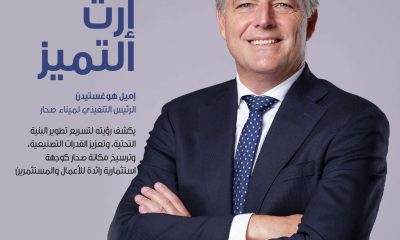
 Alamaliktistaad Magazines2 months ago
Alamaliktistaad Magazines2 months agoAlam Al Iktisaad – September 2025 Edition
-

 News2 months ago
News2 months agoKitchenomiKs Secures Investment of US$3.2M Led by Jasoor Ventures
-

 Banking & Finance2 months ago
Banking & Finance2 months agoOman Arab Bank Highlights Its Ongoing Strategic Initiatives and Future Plans
-

 News2 months ago
News2 months agoIEA Expects Global Oil Market to Remain Oversupplied in 2026
-
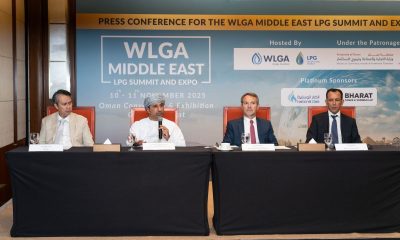
 Energy2 months ago
Energy2 months agoWLGA Middle East LPG Summit & Expo 2025 to be held at OCEC on November 10 and 11
-
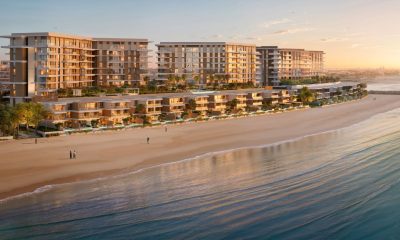
 Real Estate2 months ago
Real Estate2 months agoAl Mouj Muscat Unveils Azura Beach Residences Phase 2: A New Chapter in Waterfront Living
-
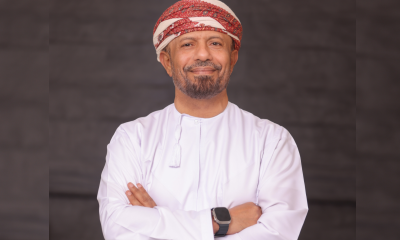
 Leaders Speak1 month ago
Leaders Speak1 month agoDhofar International Development and Investment Company: Driving Sustainable Growth and Strategic Synergies in Oman’s Investment Landscape
-
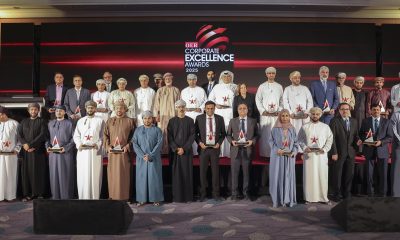
 Events1 month ago
Events1 month agoOER Corporate Excellence Awards 2025 Honours Entities and Innovations in Oman































You must be logged in to post a comment Login